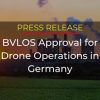Efficient, frequent, automated visual inspections hold the key to reducing carbon footprints and ramping up green energy production. If it isn’t already part of your organization’s Environmental, Social and Governance (ESG) toolbox – well, it should be.
Visual inspections are critical to ensure your site’s assets are in good condition, monitor for unwanted emissions and environmental infractions, and to monitor green energy facility construction to meet deadlines. And automation is poised to help overcome the visual inspection challenges faced by today’s heavy industry. Challenges such as how to safely inspect for fugitive emissions, or how to manage large quantities of visual data are being tackled easily by automating and digitizing previously manual processes.
Energy and heavy industry stakeholders are combining robotics and advanced software and fully automating visual inspections, meeting their ESG goals in three main ways:
- Frequently and safely detect fugitive emissions with autonomous OGI inspections
- Gain real-time visibility to their site health and find failures before they escalate into safety and environmental disasters (think forest fires caused by electric grid failure)
- Scale up green energy facility construction with the most advanced software for construction tracking.
Reducing environmental damage using autonomous OGI drone inspections
Optical Gas Imaging (OGI) sensors are able to detect volatile organic compounds (VOCs) and have been transforming the way Oil & Gas players are detecting leaks and fugitive emissions. But using an OGI camera manually, on the ground or mounted on piloted drones, is inefficient and often unsafe – exposing employees to hazardous emissions. Moreover, relying on the availability of certified OGI experts reduces inspection frequency, leaving potential leaks undetected.
One eco-focused solution from Percepto uses autonomous drone inspection to check for gas emissions and leaks near equipment. Using advanced optical gas imaging (OGI) payloads, self-piloted drones can accurately inspect equipment at oil and gas sites, to detect pollution or leaks in a way that is far safer and more accurate than manual inspections.
The Percepto Air Max OGI drone-in-a-box, resides permanently on site, always ready for gas inspection, and is the only autonomous drone drone-in-a-box (DIB) solution with an integrated onboard OGI camera. A DIB deployed on site can deliver OGI inspections at any facility multiple times a day. It’s not affected by the weather or subject to operator experience or skills, and comes with guaranteed reliability. By conducting daily emission inspections, Oil & Gas players can detect methane emissions early on, reduce the risk of incidents and significantly cut down their carbon footprint. For the first time ever, they can become aware of leaks as they happen and can respond quickly and safely, without risking personnel or the environment.
Going proactive: enhancing preventive maintenance to prevent environmental and safety disasters
Effective and frequent preventive maintenance is critical for organizations to maintain asset health and reliability. For heavy infrastructure, the stakes of performing efficient preventive maintenance are high. Think for example of an aging power grid that can catch fire, or a remotely located chemical plant with highly-concentrated waste that could spill. The list goes on and on, with risk of oil leaks, spills, fires and floods – but it isn’t all doom and gloom.
Globally, organizations face preventive maintenance challenges ranging from limited workforce availability, high inspection costs, to manual inspection safety concerns. And as a result, inspections are often performed infrequently, or even reactively.
Companies today are leveraging automated inspection to tackle these challenges, and as a result are boosting inspection frequency across their infrastructure. Percepto AIM revolutionizes the way organizations perform preventive maintenance inspections, with fully automated inspections conducted at the push of a button from anywhere in the world. Remote, AI-powered inspections, powered by on-site autonomous drone-in-a-box, catch failures as they happen, with AIM’s cutting edge anomaly detection algorithm automatically detecting infrastructure failures down to 0.3cm in size. With on-site drone-in-a-box performing inspections on a daily basis, effective preventive maintenance strategies can be implemented, fixing small faults before they might turn into large-scale disasters.
As an added bonus, with fully unmanned inspections, employees are no longer exposed to risky inspections. During day-to-day operations, manual inspections may entail climbing icy towers, going up on scaffolding, or being exposed to harmful chemicals or emissions. And during an emergency, the ability to gain situational awareness before sending in repair crews is critical for employee safety.
Streamlining solar farm construction to scale up green energy production
Automating inspection is the ideal way to reduce carbon footprint, but is often overlooked as a solution to help scale up green energy production. Going green requires inspection to get plants up and running AND to prevent problems once they are operational. The average 50MW solar farm construction project is delayed by 20%, costing energy companies an average of $2M per project. With companies managing multiple large construction projects and contractors at once, those numbers and pains only grow. Regular visual inspection with close up monitoring and reports can help overcome the challenges facing solar sites, including making sure the site is being built as designed, managing multiple contractors, managing multiple construction projects, and more.
Before turning to Percepto, one major energy company reported that their contractors provided daily construction progress updates on a post-it note! With no choice but to rely only on the contractors’ manual updates, the company had very little oversight on structural site planning, deliveries, and daily installations. In one contractor “mix up” during the civil construction phase, the stormwater controls weren’t built according to plan, which resulted in water damage to nearby communities and setting the project back significantly.
AIM software helps optimize and streamline solar construction for groundwork, construction, commissioning, and operation and maintenance – comparing as-built to planned and tracking daily progress.
Percepto’s AIM software package for solar construction monitoring delivers daily, AI-powered progress reports, and includes C-level tools allowing companies to effectively manage multiple projects at once – from any off-site location. The features include object counting, reports for as-built versus planned, construction progress tracking, daily reports, terrain mapping, and data analytics.
Once the site is built, the autonomous drones can optimize the maintenance of solar and wind farms. Fitted with a thermal imaging camera as payload, these drones regularly fly over the farm sites to identify any problems with solar panels or turbines by conducting visual analytics based on infrared radiation patterns. Everything is done remotely with the push of a button, eliminating the time and effort required to have engineers manually inspect the area.
Are you adding autonomous inspections to your ESG toolbox in 2023?
Automating site inspections and monitoring allows energy companies to easily incorporate preventative maintenance that can minimize disaster, cut down on carbon emissions AND scale up green energy facility construction.
Book a demo to find out exactly how Percepto can help your business meet ESG goals and power up responsible environmental activities.





